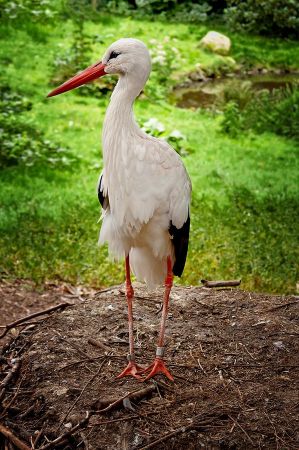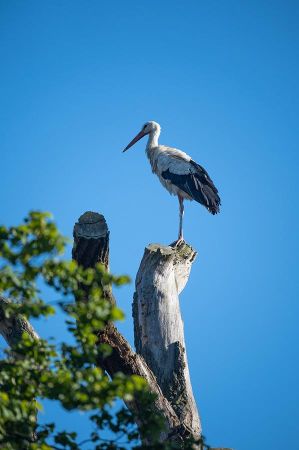Encounter - Storks along the road through Neo Kastro
- Written by Portal Editor
Shortly before Nea Agathoupoli we left the E75 motorway towards Thessaloniki to take the country road to the royal tombs of Vergina, the ancient Aigai. One of the royal tombs was discovered in 1977 and identified as the tomb of Philip II. Another tomb, discovered a year later, was identified as the tomb of Alexander IV, son of Alexander the Great.
The underground museum built around the grave sites contains the main treasures of the Macedonian kings from pre-Roman times.
The journey alone shows a region that is interspersed with rivers and the associated huge wetlands. Continuing towards Thessaloniki, the highway runs directly along the edge of the huge wetland of the Aliakmonas National Park, which almost reaches the city limits of Thessaloniki. A paradise for birds to overwinter and just as much for bird watchers, that's our thoughts.
A paradise for birds to spend the winter

Storks are diurnal birds. Only the wood stork has been observed fishing at night; the other species rest at night. In the tropics, storks are particularly active in the morning and evening hours, while in temperate latitudes activity is spread throughout the day. However, in most stork habitats, heat is a bigger problem than cold. Spreading the wings, raising the feathers and defecating on one's own feet are remedies used to combat the heat.
Fish, frogs and rodents are the main food for storks

Although in popular belief frogs appear to be a white stork's main food, in reality they only make up a small part of the diet. The larger proportion are fish, tadpoles, snakes, lizards, voles, moles and hamsters, as well as large insects. The capture of weasels, young goats and cats has been documented, but these are rare and exceptional cases.
The gluttons, as storks are often called, are specialized in hunting in very shallow water, which is often muddy and murky. Since their eyes cannot see anything in this water, they move through the water with their beaks submerged. They dig up the mud with their feet to flush out prey. If a prey animal comes into contact with its beak, the stork grabs it immediately.
Through the water with its beak submerged
Building a new nest is often not necessary. Solitary species usually use the same nest every year anyway; colony breeders occupy an existing nest within the colony, but rarely the one from the previous year. Nevertheless, fresh nesting material is always added. A stork's nest consists mainly of branches and twigs. It often also serves as a breeding place for smaller birds; These build their own nests outside and thus strengthen the stork's nest with their own material.
A wonderful encounter that led us to take a short break on the journey to ancient Aigai to observe the storks' activities extensively.
Please read as well:
Turkey - Bird Watching at Göksu River
Bird watching Sasali - wetland near Izmir
https://www.alaturka.info/en/life/fauna/6370-encounter-storks-along-the-road-through-neo-kastro/amp#sigProIde770c43960